TABLE OF CONTENTS
“What is the best 3D render engine?” The question that pretty much every 3D artist has asked at least once. And with good reason.
You spend hours inside the viewport modeling, sculpting, texturing, and shaping your perfect creation—do you just leave it at that? Of course not.
You didn’t do all of that work for it to just sit in that dull gray viewport and be nothing.
No, you want that magnificent creation to shine in all its highly detailed, immaculately shaded, ray- & path-traced glory!
And a good render engine makes all of that possible. It takes your hard work and creates a truly wonderful piece of art out of it.
So it’s only natural to ask what the best render engine to do that is. That one elusive render engine that allows you to make jaw-dropping renders each time, that’s easy to use and fast, that’s well supported, and more.
Well, the reality of finding the “best” render engine is a bit more complicated than that…
The Reality of 3D Engines
Think of 3D engines like a mighty boat out in the ocean.

It is ever-changing and evolving. The crew tending to her and keeping her afloat as she ebbs and flows as humanity pushes ever further.
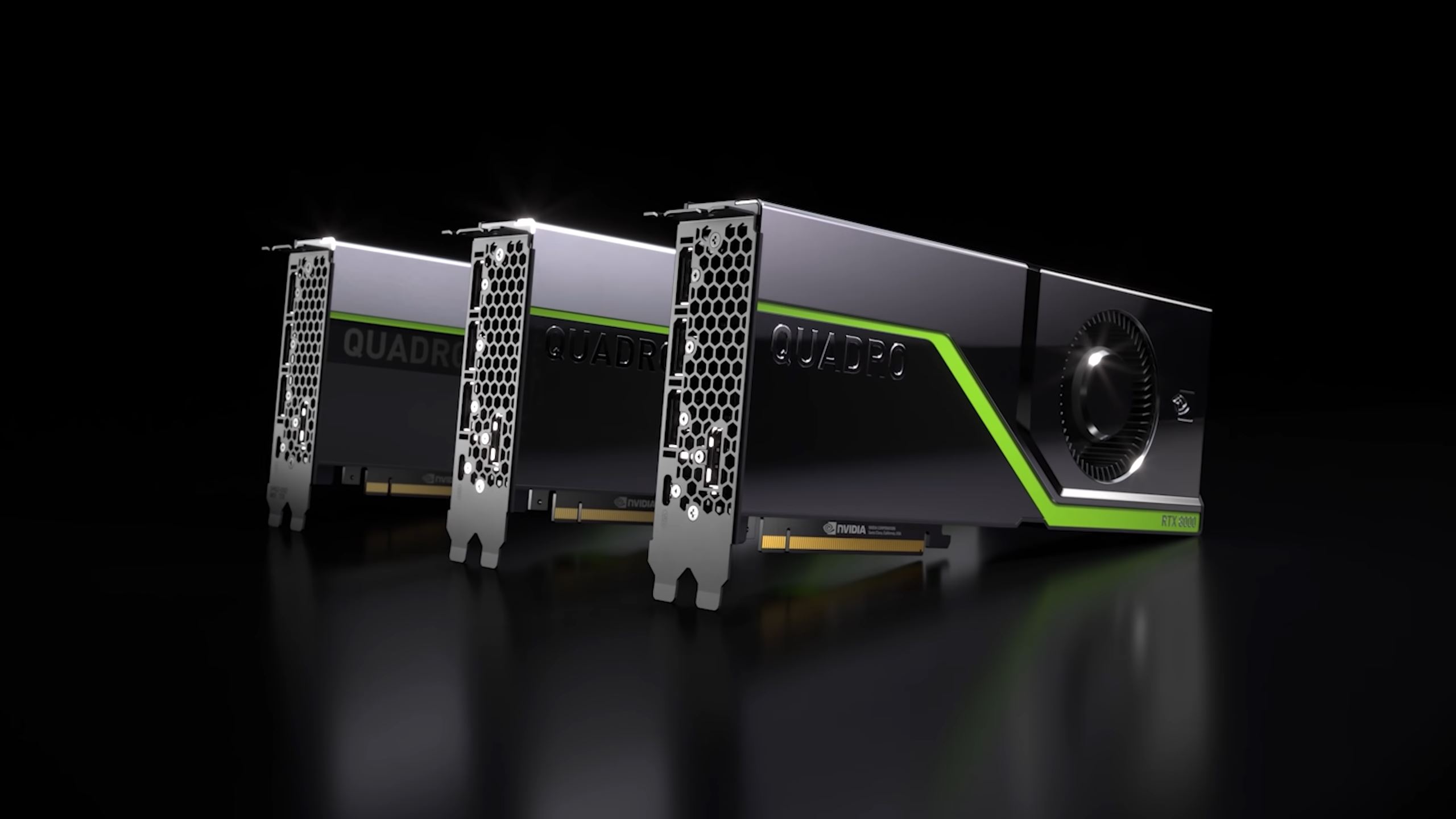
Nvidia Quadro GPU Series – Image-Credit: Nvidia
The introduction of GPU based rendering sped up the previously slow rendering times massively.
But yet, the ocean can growl and brew storms in the blink of an eye, changing the course of the journey drastically.
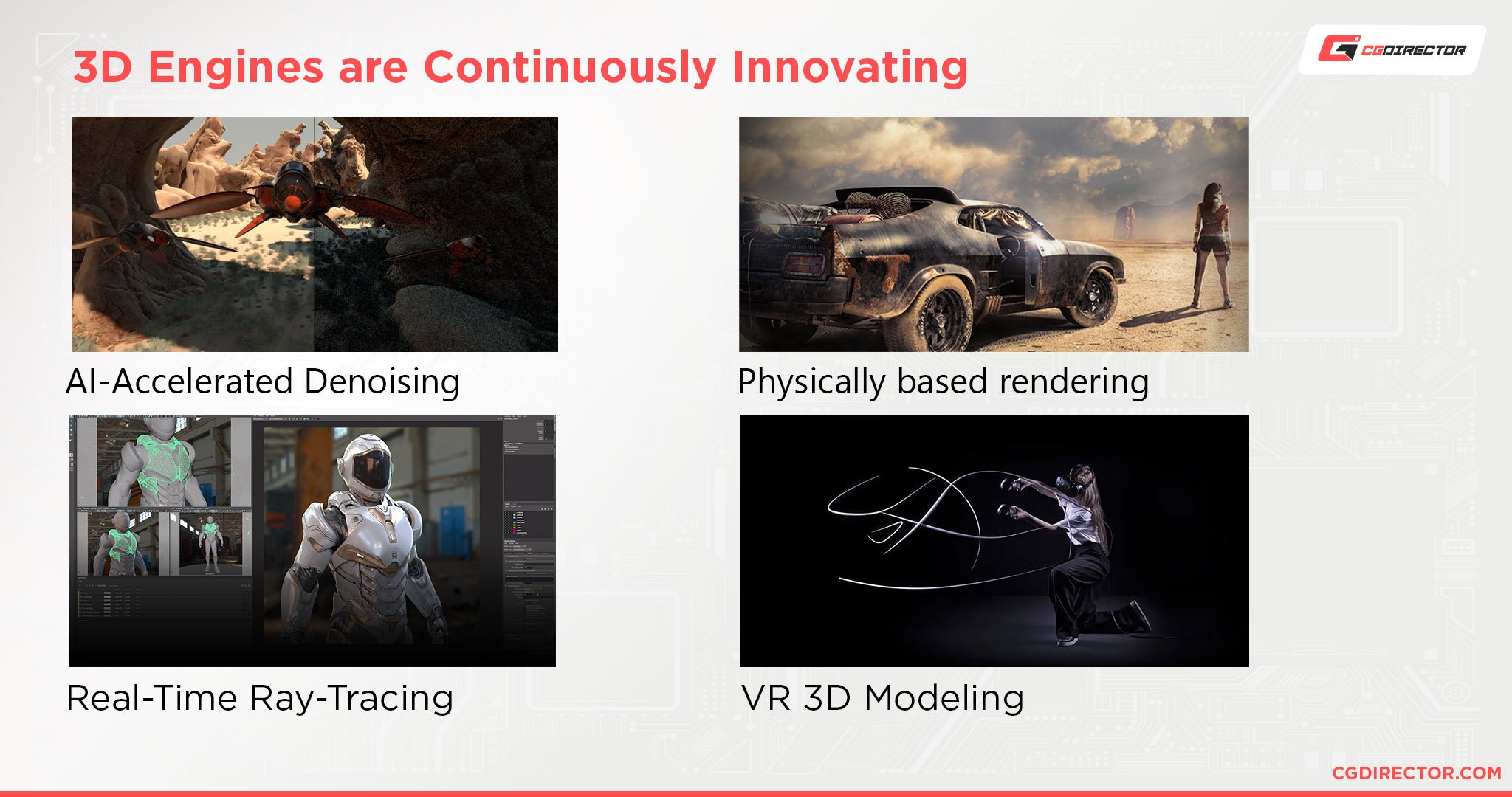
The introduction of rendering techniques such as Nvidia RTX took the industry by storm and changed the way we render using GPUs.
All this is to say that 3D engines are in constant flux. What was the best around today, will be dethroned tomorrow.
New features, hardware, rendering techniques, etc., can turn the tide quickly and change everything.
And not just that, our relationship with the engines can change. What you once bought, you now rent instead.
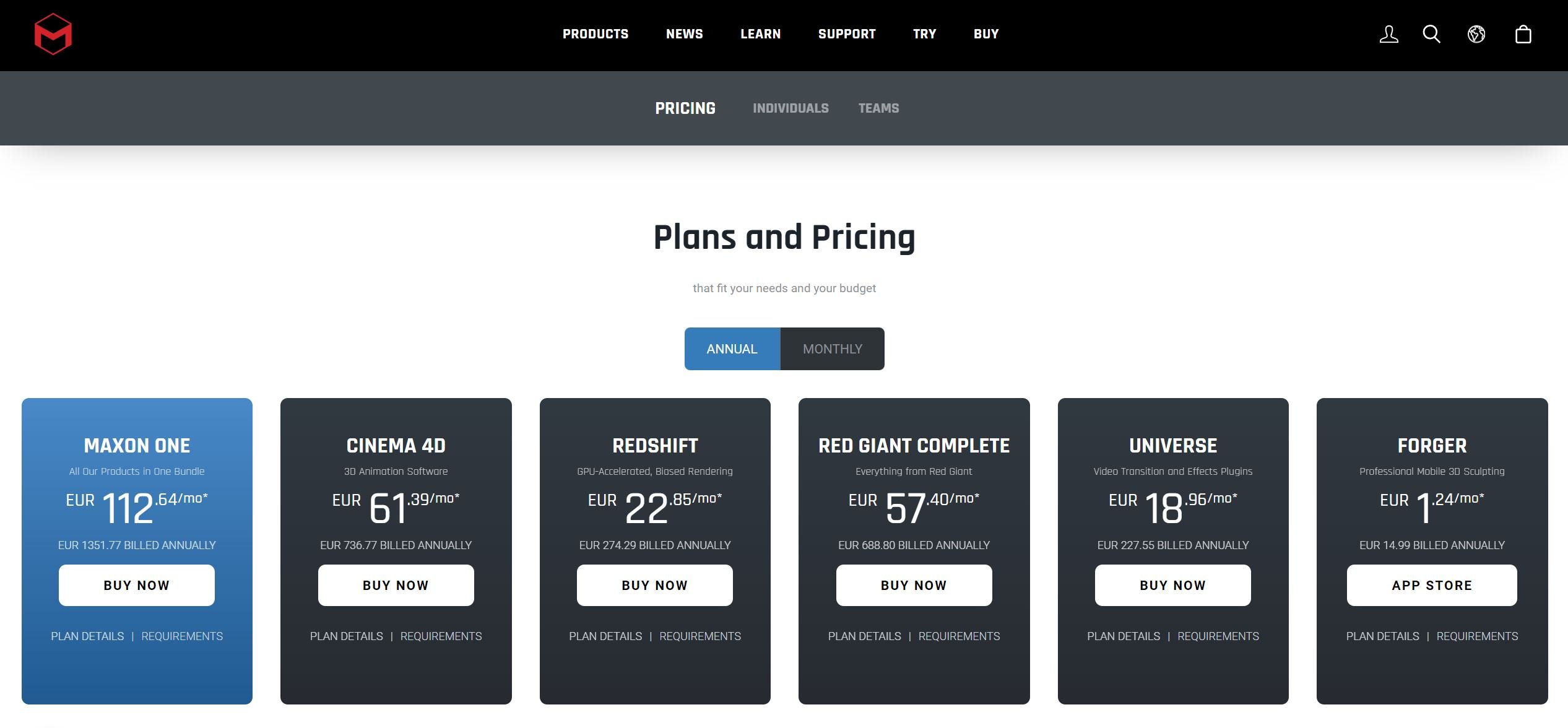
Maxon’s New Subscription-based Tools: Redshift, Cinema 4D, and more
Having said all of that, I think it’s clear now that you can’t possibly say that there’s any one “best” render engine.
People of course have preferences, and some might zealously shout that their render engine is the best render engine, but that’s just not true.
“Best” will forever be subjective, and the only thing that matters when picking the “best” is what you need, nothing else.
So, What Is the Best 3D-Render Engine for You?
Render engines are complex beasts.
Hundreds of Thousands of lines of code, complex calculations, and unimaginable amounts of work-hours put into the engine, allow you to do what you do. So it’s no wonder that picking a render engine is also quite complicated.
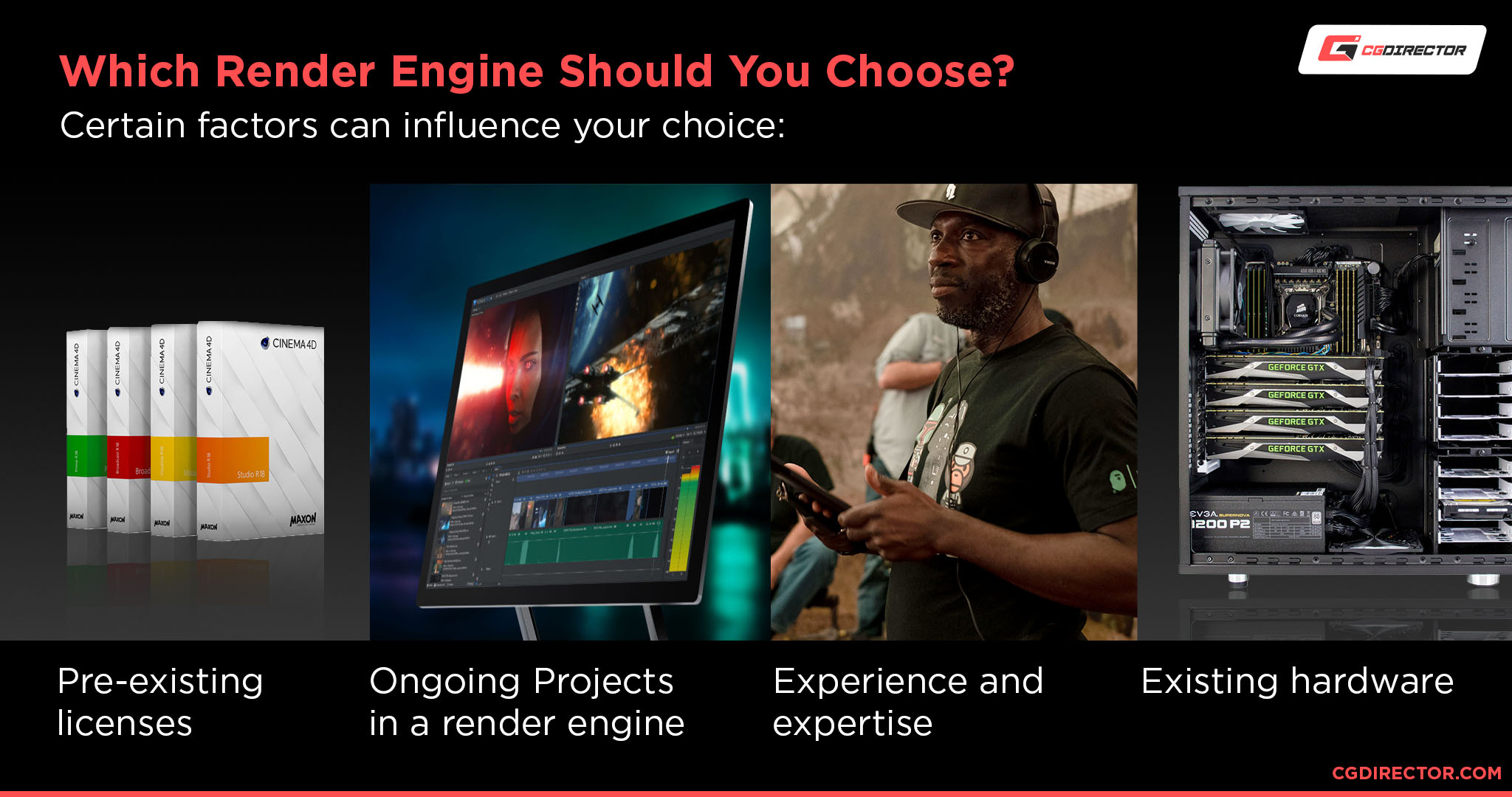
There are a lot of parameters that you can go through to figure out exactly what you want.
And not all of these parameters will be important to what you want to do either.
So I’ll take you through each one, from what I think is the most important to the least, and help you figure out what’s most important to you when it comes to render engines.
Feature-Set
This is one of, if not the most important aspects of picking out an engine. Does it have the features you need?
But that’s a pretty broad question that can be difficult to answer. So an easy way to break it down would be to first figure out what you’re working on.
Are you making architecture? Do you make more natural, photorealistic art or more “artificial”, stylized-looking art? Are you a freelance 3D artist on tight deadlines or are you a hobbyist? Are you a tinkerer or set and forget type?
Honestly, there are a million and one questions like this.
This is possibly the most subjective thing that you can ask yourself when picking out a render engine, so it’s hard to concretely say that “This one, this is the main thing that you need to figure out!“.
The best advice that I can give you is to start out with using whatever render engine comes with your 3D software of choice and get a good baseline.
You can then work off of it, in combination with questions like the ones mentioned above, to figure out what you need in a render engine.
Let me give you some examples.
Perhaps you’re a character artist. But the render engine of the 3D software that you’re using makes it exceedingly hard to get good renders of characters.
Maybe you need to do a lot of tinkering to get things to look just right but you don’t want to bother with all of that. You just want something that makes your characters look good enough without much fuss.
So, in this scenario, what you want is a render engine that:
- Has a shader system that complements character creation and allows you to easily create good-looking shaders without too much manual fuss.
- Has a more streamlined technical side that just “works” out of the box without you having to tinker with it all that much.
Now that you’ve figured out what the most important aspects to you are, you can go forth and hone in on just those aspects of any render engine that you’re looking at, significantly reducing the amount of research needed on your part and making it easier to figure out what you want.
Figure out what you’re doing, figure out the features that you use for that, and then look for render engines armed with that knowledge.
Pricing Models, Your Budget, and the Cost of Using a Render Engine
A render engine can be the greatest render engine ever, but it doesn’t matter one bit if you can’t afford it.
Like I said before, render engines are complex beasts. A lot goes into making them, and that includes money.
Because of this, render engines need to be monetized in order to actually recoup that huge cost.
Makes sense so far, right?
So how much does your typical render engine cost? 60 bucks? 100?
Well…
As you might’ve seen if you’ve researched render engines for any length of time, they can cost quite a pretty penny.
They can easily cross 500 dollars even. But that’s mostly for a perpetual license.
Which is basically a license saying that you can use the software forever without paying another cent—simple enough (without changing your host application or version, though).
But on the opposite corner, there’s a relatively new method of pricing that has been showing up more and more on products and that’s called subscription packages.
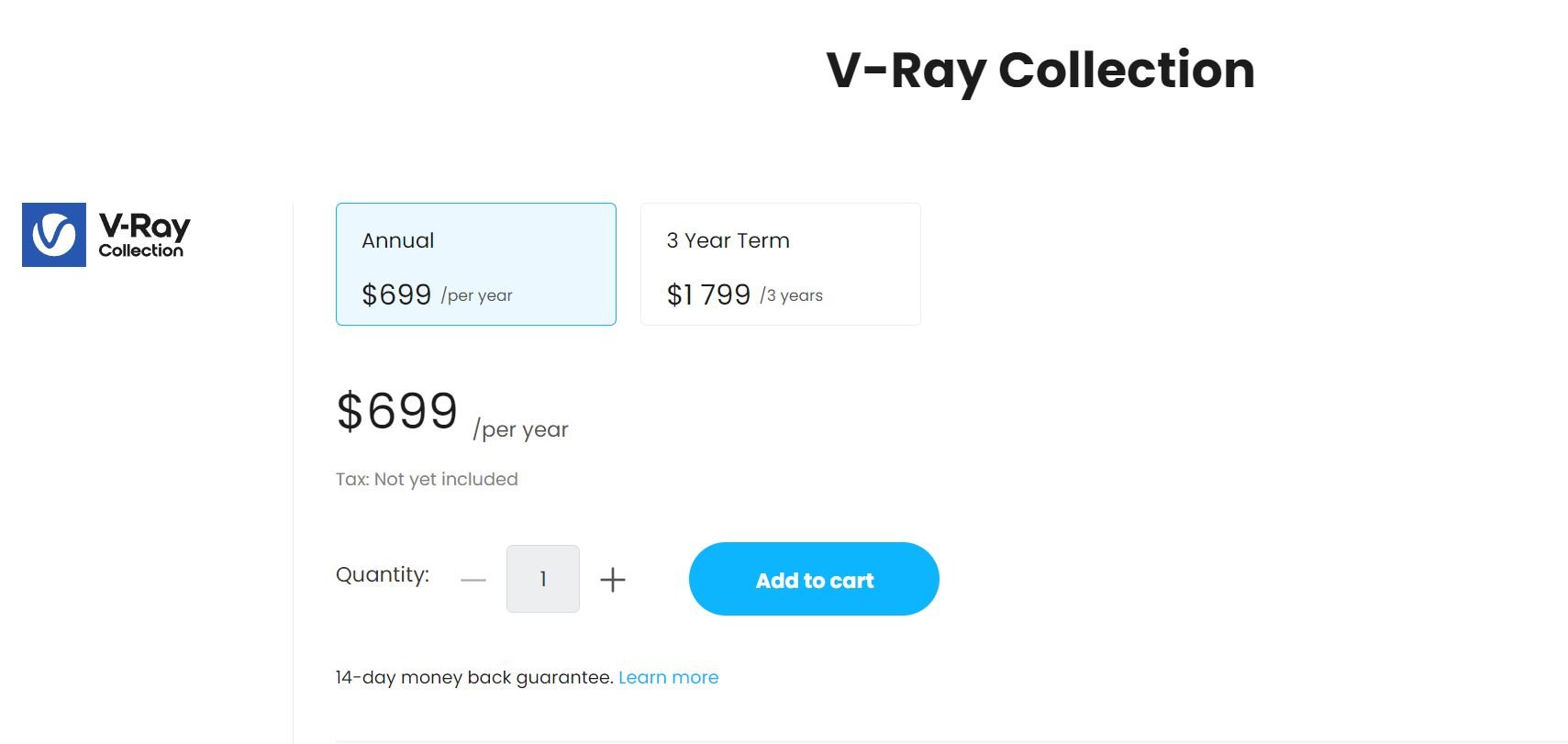
Chaos’ V-Ray Render Engine isn’t cheap to come by, even on a annual subscription
It is basically the render engine company renting you the software and then charging you on a consistent basis for as long as you use the software—usually per month or year.
This new increase in subscription services has been somewhat controversial in some circles, and I can understand why.
Perpetually renting something just doesn’t feel as good as, and can sometimes end up costing you more than, actually owning something for yourself to do with as you please.
But it can be a bit of a boon in certain aspects as well. Render engines that used to cost thousands of dollars upfront now only cost a couple hundred every year.
That lowers the barrier to entry for indie and lower-budget artists tremendously.
Yes, you can argue that they will end up paying more over time, but the alternative is them never being able to use the engine in the first place.
Not to mention that most one-time perpetual licenses are only perpetual for the version that’s currently available when you bought the license.
Meaning that if you bought a perpetual license for a render engine today and then the company that makes that render engine published a new version tomorrow, you’re sadly out of luck.
There’s also a fact that beyond the claims of companies just being greedy—not here to argue for or against that—selling their software in a subscription model gives them a lot of stability as well.
Instead of getting a payday whenever someone buys their product, they get a predictable amount of money on a consistent basis.
This allows companies to expand faster and get more work done on the render engine, bringing more innovation—this is of course if that’s where the company’s priorities lie; they can just pocket all the extra money and do nothing as well.
All this is to say that renders engines are expensive. And you need to figure out how much dough you’re willing to put down in order to get one.
You also need to figure out what type of license you prefer, perpetual (if still available) or subscription, and the monetary—and perhaps moral—implications of that.
This isn’t to say that all decent render engines require you to shell out a lot of money, however, but we’ll get to that later.
3D Software Availability
Now, this topic is another thing that’s quite subjective. This can/should be higher or lower for you depending on what your particular views are.
Is the render engine that you’re looking at available for the 3D software that you use?

It’s a very important question. If the render engine you’re looking at is not compatible with the software of your choice, you might be looking at learning how to use a whole new 3D package along with learning how to use a new render engine.
I’m personally very fluid with the software that I use. I’m not overly bound to anything, and if I see that there’s something better out there that’ll complement me/my work well, I’m not afraid to switch.
So this isn’t as important of a decision to me as it might be to you.
Perhaps you’re contractually bound to a certain 3D software and don’t want to switch and pay for something else. Perhaps you’re just used to a certain workflow and don’t want to switch it up.
Whatever the case may be. You need to figure out for yourself how much software agnosticism matters to you and then adjust the priority of this particular question accordingly.
Hardware Support
It’s all good and well if you find a render engine that has everything you’ve ever wanted, but if the Engine doesn’t run well on your hardware, it’s all for naught.
For example, if you pick a GPU render engine that uses your GPU as the main component in rendering your image but you don’t have a good enough GPU or you don’t have a supported GPU to use the render engine, it doesn’t matter how good the engine is because you won’t be able to use it well enough.
Now, it’s worth mentioning that many render engines these days are hybrid render engines. Meaning that they can use both your CPU and GPU to render.
Not all of them, but a good enough portion that if you throw a dart at a board of render engines, you’ll most likely hit a hybrid one.
So the likelihood of you not being able to render anything at all is rare. If you don’t have a great GPU, you can probably just render on your CPU, or vice versa, with the main cost mostly being rendering time.
Though it should be mentioned that most GPU-based render engines are heavily skewed towards Nvidia and have worse support for AMD Hardware—if they support them at all.
Still, the days of having to shell out a lot of money to get very specific hardware that a particular render engine supports are mostly gone.
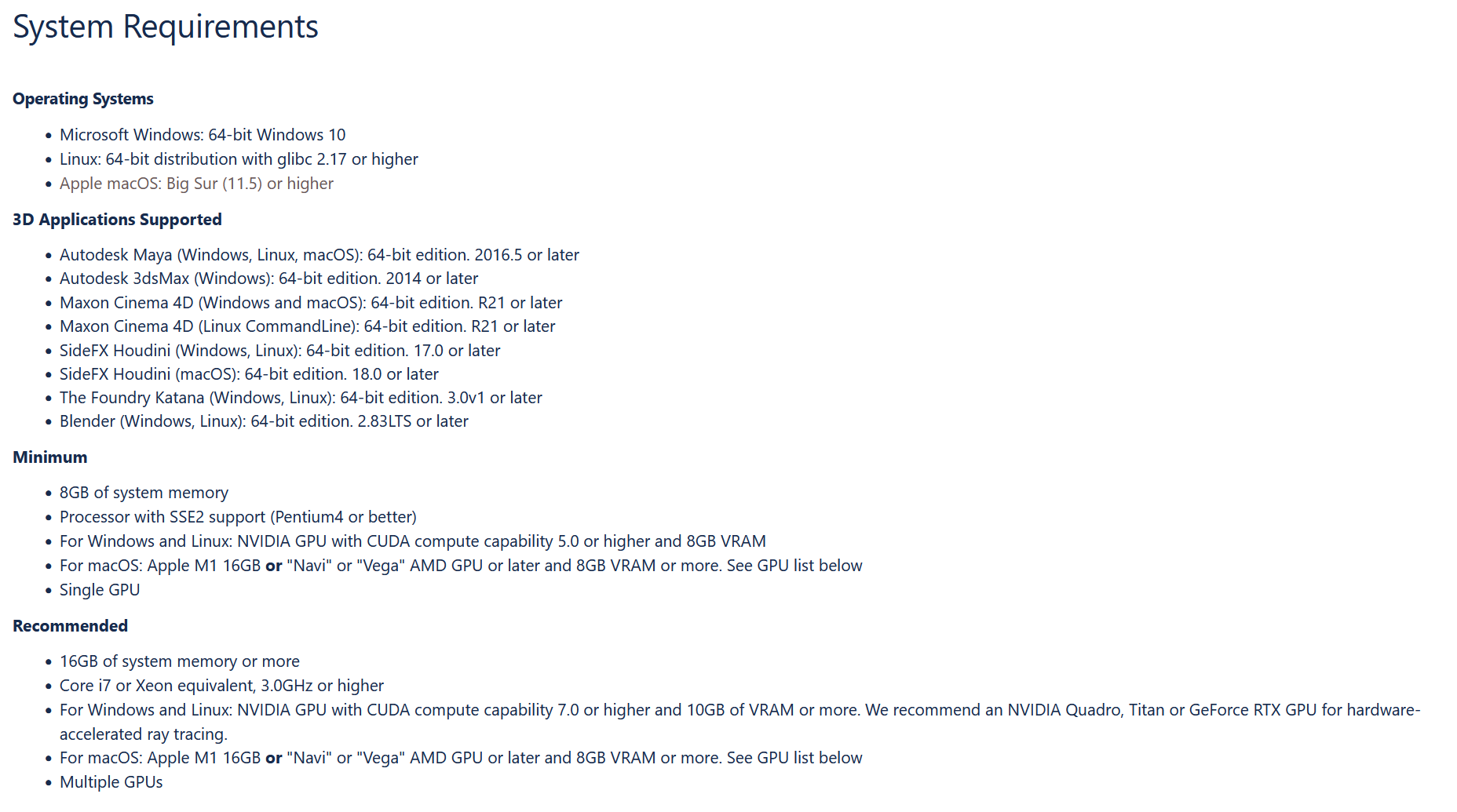
Redshift (GPU Renderer) System Requirements
Even still, if you want the best performance possible out of your chosen render engine, it’s best to make sure that you have the hardware to make full use of it, and if not, figure out whether you’re willing to spend a lot of money on getting new hardware for it.
There’s also the fact that it’s getting easier and easier to offload any rendering work that you might have into an online render farm instead of bothering with rendering it yourself.
But even if you plan on eventually having the final renders done on a render farm, it’s important to have good enough hardware to be able to test render your scene before you commit to anything.
Quality & Availability of Documentation/Tutorials
This comes back to my point about render engines being complex beasts.
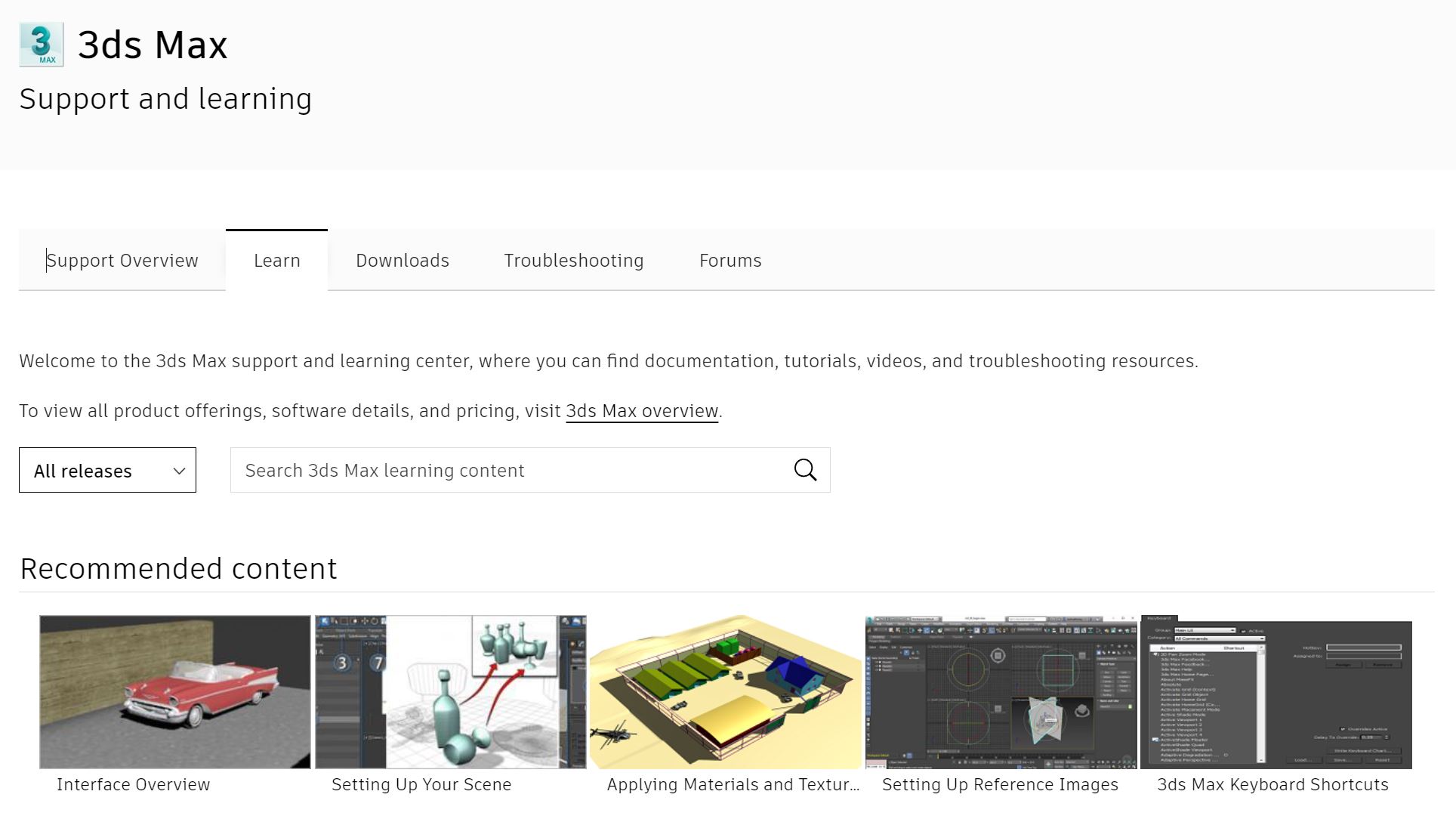
Regardless of how simple a render engine might look, you will still need to understand certain aspects of the unique workflow required for that particular render engine.
We’ll truly live in a utopia once the days in which we can use shaders between engines without any sort of tinkering or troubleshooting arrive, but, until that glorious day, you’ll have to learn to work with the particular quirks of any render engine that you switch to.
Which is where good documentation and tutorials come in.
This is usually not a very well talked about aspect of picking a render engine, or any sort of software to be honest, but is in my opinion one of the most important aspects of picking a new piece of software.
Regardless of how advanced an engine might be, if you need a Ph.D. in computer graphics to understand how to use it, you’re probably not going to be using it.
So it’s important to vet how the documentation, tutorials, and general ability to quickly learn the ins and outs of a render engine is.
I recommend that you go and see if the engine has a sizable community following around the internet first. E.g., Reddit Subreddits, Forums, Discord/Slack servers, Youtube-Videos etc.

Well made, first-party tutorials are all well and good, but chances are that you’ll run into a problem that can’t be helped by those tutorials, so if there’s no one around to help you out, you just might get stuck and give up.
But that’s not to deride the usefulness of first-party tutorials either.
Clear, well-made tutorials are a good sign of any software company, and they’ll probably be one of the first ways that you learn how to use the render engine, so it’s important to make sure that they’re good.
Then you should look at how the independent tutorial space looks like. Are there courses or tutorials or other stuff like that around to help you learn? E.g., YouTube, Udemy, Tips and Tricks Blogs, etc.
Responsiveness and Size of the Community for Help
This is connected to the previous topic of having a good community around the render engine.
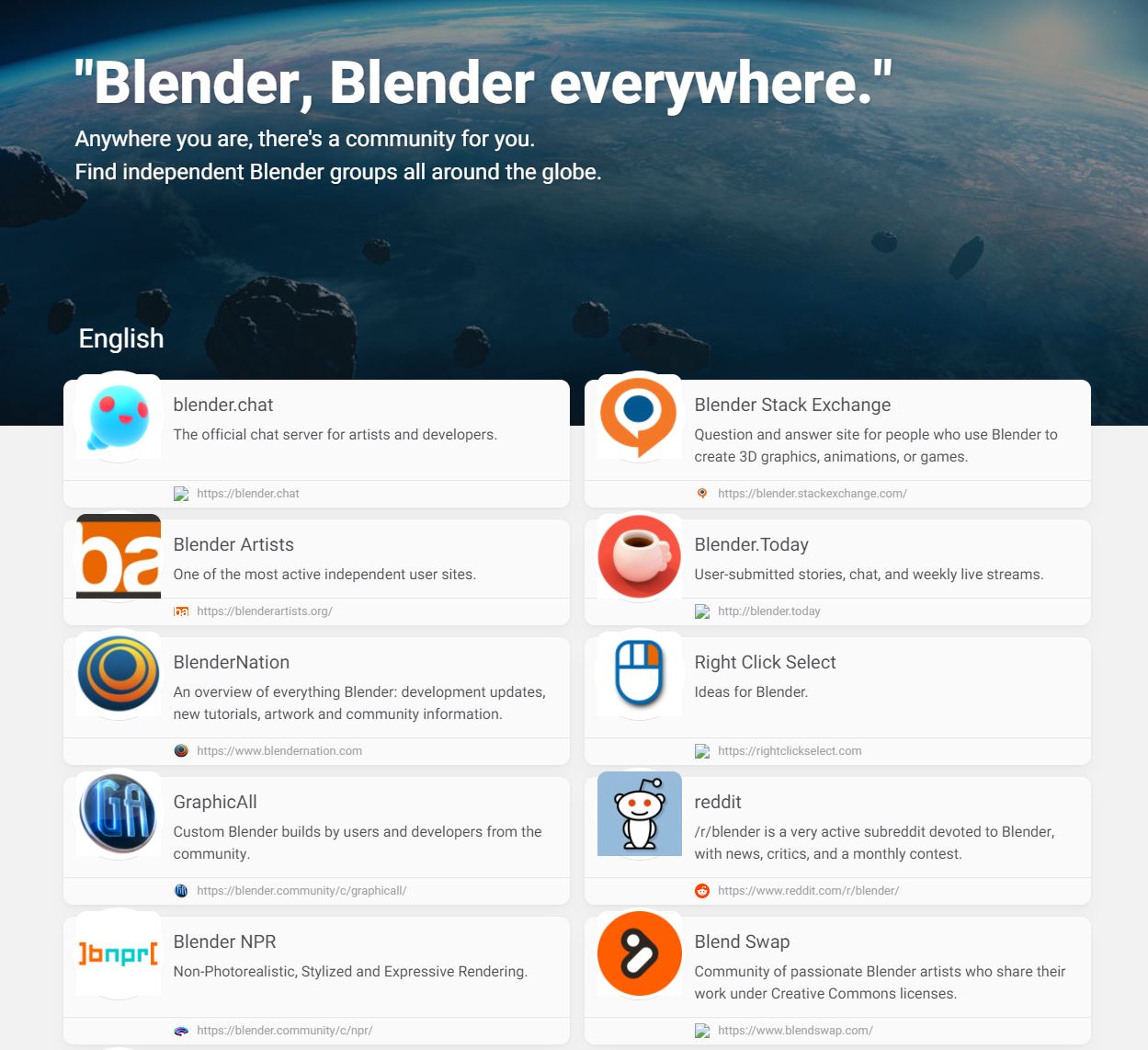
Blender Communities are plentiful
You see, you can have a massive community of people that uses the render engine, but it won’t matter at all if there’s no one around to help.
Some communities are just plain more welcoming to newcomers than others and freely engage with anyone, which makes it easy to get help for whatever you need.
Whereas some communities are a lot rougher and expect you to just figure stuff out on your own, or are closed off behind subscription paywalls.
Considering how important a good, freely accessible, supportive community is to learning, it’s important to find one that is open to helping out newbies and is both sizable and responsive.
How Fast Are Bugs Fixed
Bugs. The ever-present annoyance found in pretty much any code beyond a simple print(Hello World!).
Even the most vigorously tested and immaculately created programs have bugs. It’s simply a fact of life.
Now consider the fact that render engines are monolithic programs created to simulate the very fundamental truths of reality.
What I’m saying is that they have bugs. Yes, all of them. Every single render engine out there has bugs.
It’s about as fundamental a truth as the reality the render engines are trying to simulate.
But that doesn’t really matter. Bugs will always be a thing. What does matter is how they’re handled.
Do they have an easy-to-use system in place for you to report bugs? How fast do reported bugs usually get fixed? Are there any long-standing bugs? Why haven’t they been fixed? Do users of the render engine resort to hacks to get the engine to work in some aspects?
Those are the questions you should be asking. I’ve come across a bunch of bugs that I meticulously reported to the engine’s developers. Some were fixed in no time, some were ignored and some were declared to be a feature.
If it’s any half-decent render engine, they’ll have a lot of QA (Quality Assurance) tests before release and will have almost no glaring issues.
And issues that are found are quickly and efficiently fixed. If you see that there are long-standing bugs that haven’t been fixed for years, that’s not a great sign.
It could mean that the engine is barely functional and is running on what amounts to digital duck tape and prayers to the elder gods.
Which is obviously not great if you want something that you can rely on.
What’s the Release Cycle
This goes hand in hand with the previous point. Good render engines are constantly being worked on and updated.
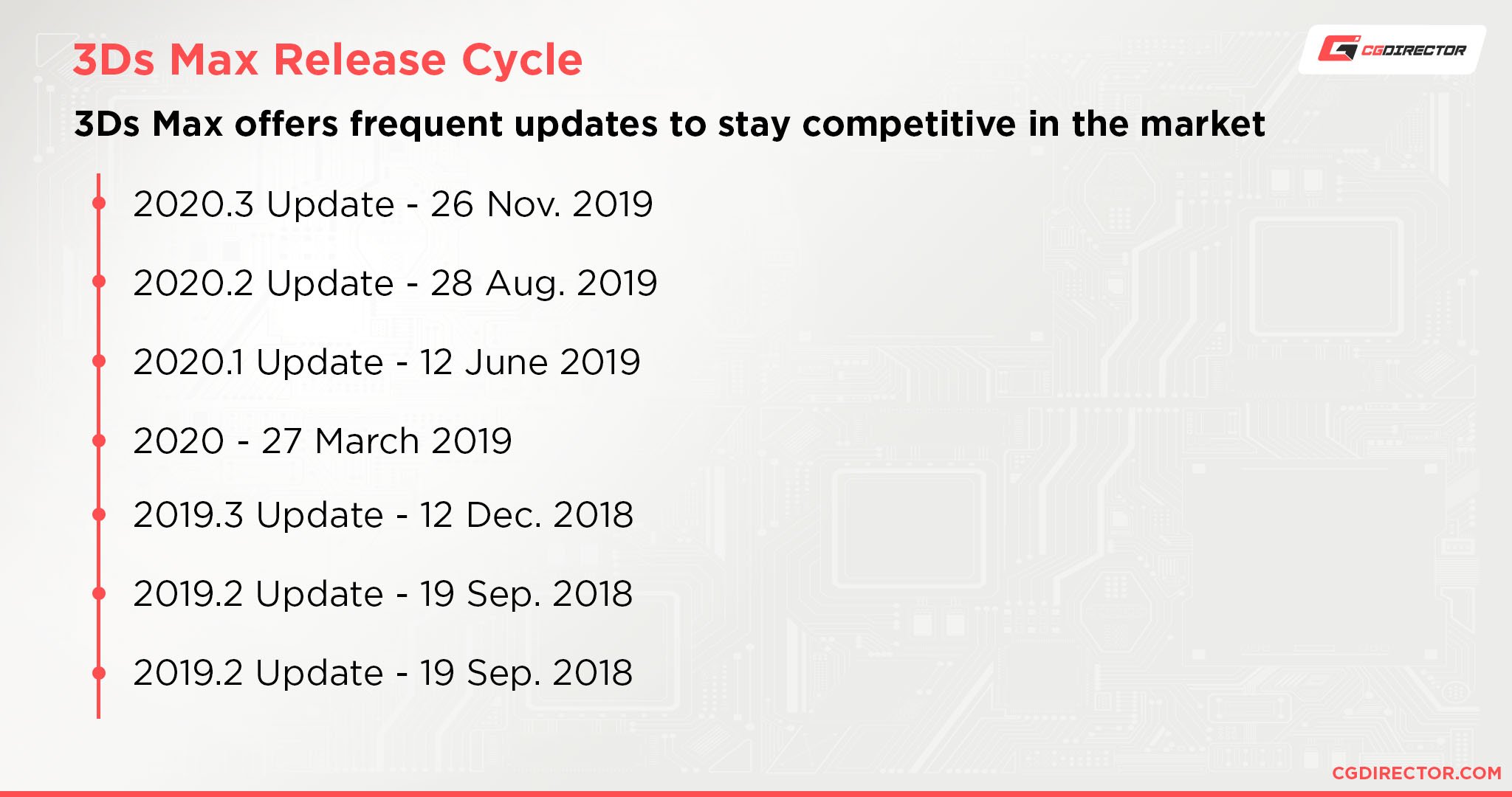
If a render engine is stingy with the updates and bug fixes, it could very well get quickly surpassed by other engines that adapt to the changes in the industry faster.
A good, stable render engine is nice and all, but if it’s 10 years behind the competition when it comes to speed and ease of use, it doesn’t matter how battle-tested it is.
So it’s important to find a render engine that is updated on a regular basis.
How Is the Future Proofness
This is an odd question. It’s almost completely at odds with what I’ve been saying about the progression of render engines and how they evolve so fast.
How can they ever be “future proof” in an environment like that?
But it’s still an important question. You can think of it like…a combination of the questions we asked before this point. A holistic view of a render engine as opposed to focusing on any one aspect of it.
For me, future proofness means that it’s a render engine that offers me all/most of the features that I need, is reasonably well optimized, has good documentation, and I can trust the company to keep working on it at a decent pace. It should be able to grow with my expertise, even if I learn new areas or change my styles.
Something that I can invest time into and use without much fussing about for at least a couple of years. Something that I can trust to catch up to industry trends quickly without lagging behind too far.
CPU or GPU Render Engine?
As you might’ve seen, some render engines tout support for CPUs, while some require GPUs.
Our in-depth Guide to the rescue: Is this an important distinction or does it not matter?
For the most part, no, it doesn’t matter.
If you’re wondering whether using a CPU render engine vs GPU render engine or vice versa, might give you better-looking renders, then stop wondering ’cause it won’t.
It’s not a matter of one or the other, it’s a matter of what you need.
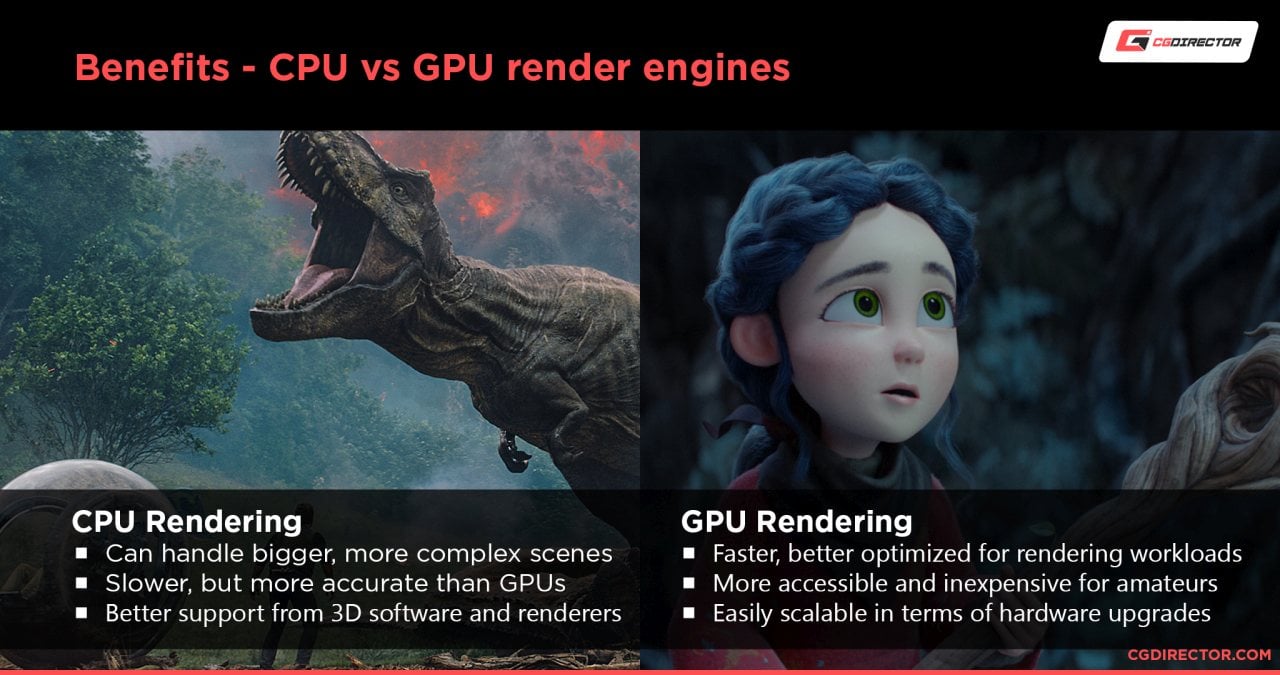
Are you creating humongous scenes with obscenely high-quality textures and need to make sure that you can render these scenes without being bottlenecked by your GPU’s VRAM? Then perhaps a CPU render engine might better suit you.
Do you want the fastest render times available, even if the renders might not be 100% accurate with their calculations? Do you value being able to quickly iterate? Then a GPU render engine may better suit you.
But as with anything creative, it’s not the tool, it’s the artist. You can create something wonderful regardless of what you use.
And considering that many render engines these days support both CPU and GPU rendering, you’re free to choose whatever option best suits you.
The Best 3D Render Engines for Your Needs
Finally, we’ve arrived at the finale. These are some of the most popular and well-respected engines currently available on the market.
It’s worth mentioning that I will only compare engines that are available in at least 3 major content creation packages and/or are widely used/popular.
If I listed every half-decent render engine, we’d be here all day.
Anyway, let’s get to it, shall we?
Blender – Cycles

The Cycles renderer present in Blender, and available in some other packages as well (Poser, Rhino, Cinema 4D, 3ds Max), is one of if not the best production-ready, battle-tested render engine available for free.
Nothing else comes close at this price-point. There are other free render engines out there, of course, but none of them compare to the feature set, speed, and accessibility of Cycles.
Shipped for free with every copy of Blender, Cycles, in my opinion, balances perfectly between offering you total control and no control at all while giving wonderful looking renders from the get-go without having to fuss around with a lot of knobs.
It has an intuitive and relatively easy-to-use shader system that’s easy to grasp for a beginner and even easier for someone with experience in another render engine.
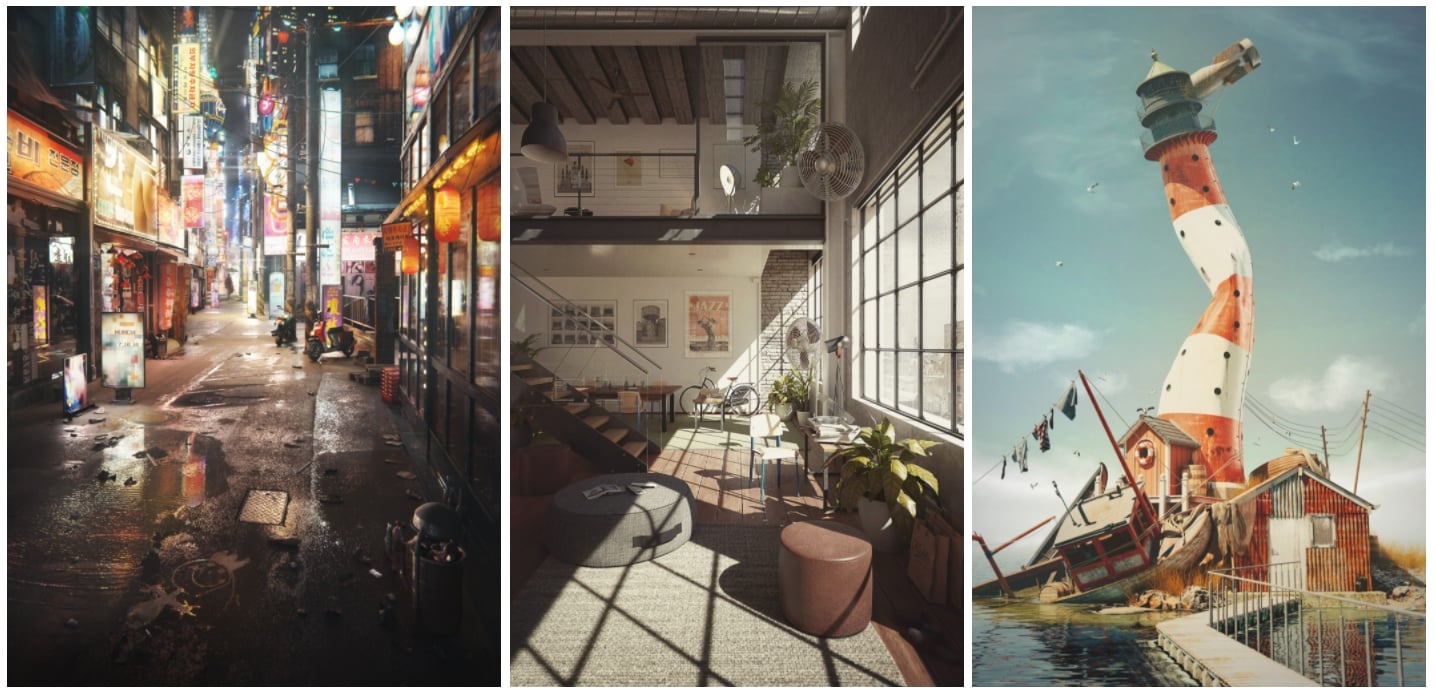
Stunning 3D Renders rendered in Cycles by Gleb Alexandrov, Arnaud Imobersteg, Lukas Walzer
With the release of Blender 3.0, Cycles now also brings cutting-edge speed and real-time denoising through Nvidia Optix or Intel Open Image Denoise.
Renders that took hours can now be done in minutes, and I think it’s self-evident how much of a boon this is to artists of all levels.
Overall, Blender Cycles is a great render engine that can go toe-to-toe with any other render engine on this list; all for the low, low price of free.
If you’re a hobbyist starting out, or literally anyone that wants a solid render engine that can do pretty much anything they want, Cycles is a great option.
Maxon – Redshift

Maxon Redshift’s claim to fame is being the world’s first biased, fully GPU-accelerated render engine. Oh, and by also being one of the fastest and easiest to use render engines around.

Redshift Renders by Hirokazu Yokohara, Alex Liu
Being a biased render engine, Redshift uses some tricks to speed up rendering that technically makes it so that it’s not “fully realistic” but take one look at those renders and tell me if you can tell the difference between it and a non-biased render engine.
You can’t, and that’s the beauty of Redshift. It offers renders comparable to the most unbiased render engines in the market and it does it at speeds many times faster than those more traditional render engines can do it at.
This gives you unparalleled flexibility when it comes to your scenes as you can easily see exactly what the final product will look like far earlier than other render engines.
This makes Redshift a very popular choice among animation and marketing studios—places that have tight deadlines and require fast turnover.
And not just its speed. Its ease of use is also wonderful. It doesn’t take long for you to figure out what’s what and get going with this render engine.
But if you really want to dive into the weeds of it all and tinker with settings, well, you’ll have plenty of settings to tinker with as well.
Overall, Redshift is a great render engine for people that want something that is blazing fast, gets good renders, and is easy to use.
The subscription price is also very reasonable at around $20 – $50 per month.
At the time of writing Redshift is available for Cinema 4D, Blender, Maya, 3ds Max, Katana and Houdini. Both Windows and Mac (Metal) can run Redshift.
OTOY – Octane

Octane by OTOY is one of the most used render engines in the world and for good reason.
If Redshift is one of the fastest biased render engines around, you can think of Octane as one of the fastest unbiased render engines available.
Meaning that if you want something that gives you extremely high-quality renders that’s as physically accurate to the real world as possible, you can’t do much better than Octane.
More realism generally equals more time required to render, but Octane doesn’t really care.
Even with it being a fully unbiased render engine—which are notorious for slow render times—it is still one of the fastest render engines you can get on the market right now.
Because of this, Octane is used in many industries. Everything from games to movies, shows, advertisements, and especially VFX.
Octane’s speed and realism is a match made in heaven for VFX artists. So it’s no wonder that a large majority of VFX companies use Octane as their render engine of choice.
However, Octane has some less than ideal aspects to it as well.
Things like relatively frequent crashes and GPU-only rendering make it feel a bit less polished than some of the other render engines.
You generally get used to Octane’s crashiness, and it’s not that much of a hassle or problem as it’s just fine most of the time, but it’s still something that you need to keep in mind.
And as for only using GPUs to render, this can limit you if you like to create extremely complex or unoptimized scenes with high-quality textures and high poly meshes.
If you don’t have enough VRAM in your GPU to fit all of that data in, you’re not going to be rendering anything with Octane—whereas you could fall back to CPU rendering with hybrid engines.
Still, Octane is a great render engine that gives you an unparalleled combination of realism, speed, and ease of use.
At around $15 – $25 a month for a subscription, it’s a very affordable option that’ll give you good renders regardless of what you do.

Octane Supported Applications
Chaos Group – V-Ray

V-Ray by Chaos Group is one of if not the most widely used render engines around.
Ever since its inception back in 1997, V-Ray has been adopted into many different fields. Everything from movies, shows, games, advertisements, and everything in between uses it.

V-Ray Renders by Mitar Micko, Bertrand Benoit
V-Ray has also been very popular with the architectural crowd because of how well it handles both interior and exterior arch-wiz scenes.
Because V-Ray has been around for a while, it has developed a large fanbase and supportive community.
That also means that there is a veritable treasure trove of tutorials and other content out there that you can use to learn V-Ray.
But V-Ray’s maturity is also a point against it in some aspects.
V-Ray has a tendency to give you too much information and dump a lot of settings on your lap, but it isn’t as big of an issue as it once was.
Actually, it’s a lot better at it now than it was.
You don’t need to tinker for hours to get something to look good, you can get something great in just a couple of clicks, but it allows you to dive in deeper if you want the control as well.
Still, most people would find V-Ray more complicated than other more streamlined render engines.
Other than some learning pains you may find here and there, V-Ray is an amazing render engine that you can use regardless of whether you want to use your CPU or GPU.
It’s a lot pricer than some of the other options here at about $700 per year, so it’s definitely leaning more to the side of being something that only makes sense for professionals.
But, if you want to use a render engine that’s tried and true or you want to get familiar with the industry standard, you can’t go wrong with V-Ray.
Chaos Group – Corona

Corona by Chaos Group can be thought of as V-Ray, but easier.
It easily trades blows with V-Ray when it comes to some of the situations that people loved using V-Ray for, like architectural work.

Corona Renders by Dmitry Leonovich, VisEngine
And that’s because Corona has a wonderful way of just working.
No need to fuss around with hundreds of settings or tweak stuff to get everything looking nice.
It just worked out of the box and boy does it work well.
Corona might not be as expansive as other render engines when it comes to the number of options you get out of it, but it doesn’t need to be that expansive. It wasn’t made to be.
Corona was made to be easier to use and more intuitive than the other render engines that were around at the time.
This makes Corona quite new compared to some of the other render engine offerings on this list, but it allows it to be more focused on the things that truly matter instead of being tied to a certain type of workflow because that’s how it’s always been done.
But that’s also one of the weak points of Corona. Because of how new it is compared to other render engines, it doesn’t support as many 3D software packages as other render engines.
It’s only available for 3DS Max and Cinema 4D—though there are plugins that allow you to use other 3D packages, but use Corona standalone, which isn’t ideal, but it works.
Overall, Corona is a great CPU-only alternative to V-Ray.
In my opinion, Corona is king for architecture. Other engines can make good-looking architectural renders of course, but Corona just makes things trivially easy.
And at around $25 – $60 per month, Corona is also a lot cheaper than V-Ray, making it a much more realistic choice for hobbyists and the like.
Autodesk – Arnold

Arnold by Autodesk is another monolithic engine in the same vein as Octane or V-Ray. It’s used in a variety of industries from movies and shows, to games, visualizations, and more.

Arnold Renders by Christian Leitner, Tomas Kral, Kris Costa
Arnold is an unbiased render engine focused on usability and stability for large production workflows.
If you’re striving for photorealism, it’s one of the best render engines around to achieve it.
And it does all of that without being bogged down with thousands of settings and things that you have to tweak.
It just works, and it works well.
Arnold is a very optimized and stable engine, so it’s a prime candidate for large productions that require stable and predictable render engines.
The main point against Arnold is its speed. It’s a very good engine in most other regards, but speed isn’t its focus.
This makes sense in some regards, it’s an unbiased render engine striving for complete realism, of course, that will be slow.
But still, it’s an important point that needs to be brought up.
But, its very flexible CPU/GPU rendering workflow, easy-to-use shader and post-processing system, stability, and general ease of use make it a very strong render engine for pretty much anyone.
It’s a little pricey at around $45 monthly or $360 yearly, but considering what it offers, it’s a solid engine regardless of what you want to do.
Pixar – RenderMan
![]()
RenderMan by Pixar is a render engine that’s been getting a lot of buzz lately having released its bridge plugin for Blender and making a non-commercial free version of the engine.
Compared to some of the other render engines on this list, RenderMan is a lot less popular, but that doesn’t mean that it’s any less powerful.
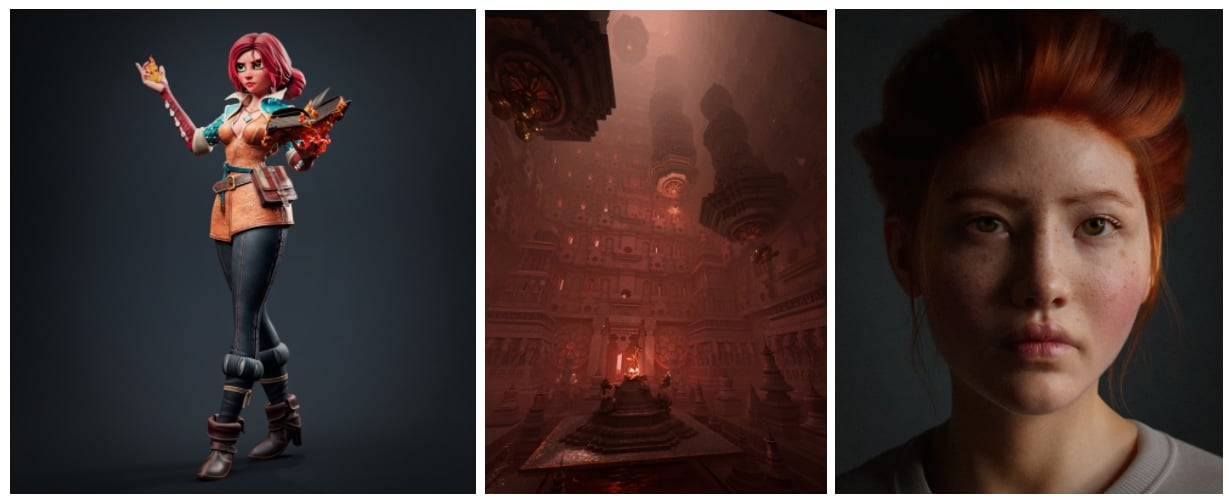
Renderman Renders by Maxime Schyns, Te Hu, Rajitha Naranpanawa
Pixar, along with its in-house 3D software, uses RenderMan as the main render engine for all recent animated movies it produces like Toy Story 4, Soul, Luca, etc.
As it’s a pretty unknown engine, Pixar’s movies are about the only thing that RenderMan is widely known for, but that’s rapidly changing.
The RenderMan team recently released a free, non-commercial version of their engine that allows you to use the engine’s capabilities sans some new features like RenderMan XPU—RenderMan’s GPU compatible renderer.
RenderMan has gotten a lot more attention recently and that is bringing a lot of new people into this awesome, yet underused engine.
As you might imagine, RenderMan is an excellent render engine if you want to create toon/NPR (Non-Photorealistic) art.
Its “Stylized Looks” allow you to quickly create NPR art with filters that can create cross-hatching, pencil looks, halftone, etc. You can also combine them to create your own unique NPR styles.
RenderMan is a wonderful engine, and I can see it becoming a big player in the render engine space in time.
However, as it is, tutorials and documentation surrounding RenderMan are a bit sparse.
So it’s excellent if you’re the type to fiddle and tinker with things or just want to try it out—though, at $600 per license, Renderman is certainly not cheap.
In Summary
Hopefully, that explained everything you wanted to know about the “best” render engine.
As we talked about, there really isn’t any one best render engine.
One render engine can add some groundbreaking new innovation into itself, but then just a month or two later, every other engine has probably caught up already.
So, trying to find a “best” out of that mess is a fool’s errand.
A much more productive use of your time is to figure out what you need for the work that you’re doing and then go out and find a render engine that complements you.

FAQ
What Is a Render Engine?
A render engine can basically be thought of as a box with a lot of very complex algorithms in it.
These algorithms help the box to figure out how to put together all the variables (E.g., characters, buildings, lights, etc.) in any scene that you give it and create image(s) that adhere to those algorithms.
What are those algorithms you ask?
Well, there are far, far too many to list here, but most render engines have accurate light bounce calculation algorithms to figure out how tiny photons of light might bounce around in a scene and light it.
Then there are algorithms to figure out how those photons of light might bounce off of certain materials like metal or glass or water.
For certain materials like glass or water, some render engines have algorithms to figure out things like caustics to get better-looking images of those materials.
And that’s just an example of some of the algorithms that you might find in a photo-realistic, unbiased render engine. It’s a whole ‘nother can of worms if we get into NPR (non-photorealistic) engines or raster engines.
So yeah. You can think of render engines as a sort of very smart box that knows how to take the scenes that you create and then give them life.
Why Are Render Engines Expensive?
Render engines are incredibly complex. Turns out, simulating reality takes a lot of work.
So it takes a huge time and work commitment from teams of people to create a good-looking, fast, easy-to-use render engine.
And as one might expect, those people also need to eat. Not to mention that they need more and more resources as time goes on to compete with other render engines on the market.
So they have to price render engines in a way that gives them enough money to continue living, do more research and development, and keep pushing out better and better versions of the engine.
All of that combined with the fact that render engines aren’t exactly something that everyone buys makes them quite expensive to buy.
Can You Use Any Render Engine With Any 3D Software?
No. Either the company that creates the render engine or the company that creates the 3D software needs to support each other in order for them to work.
Still, most of the industry-standard render engines nowadays all support a wide variety of 3D software packages, so you most likely don’t have to worry about a render engine not working with the 3D software that you use.
Are There Free Render Engines?
There are. Quite a few actually. And some of them are quite good.
Blender’s Cycles and EEVEE engines are very popular examples of free render engines. Then there are also other engines like LuxCore, AMD ProRender, BEER, and Appleseed.
Over to you
Did that help you understand what you needed to know about 3D render engines? Got any other unanswered questions? Ask us in the comments or our forum!
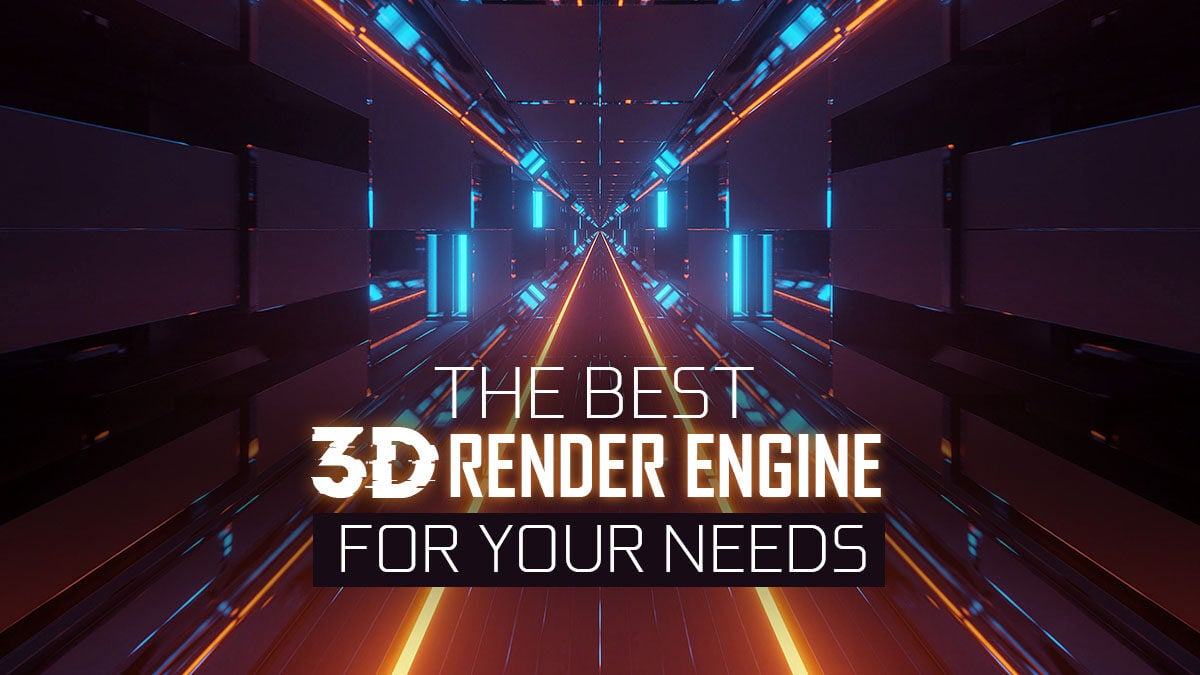
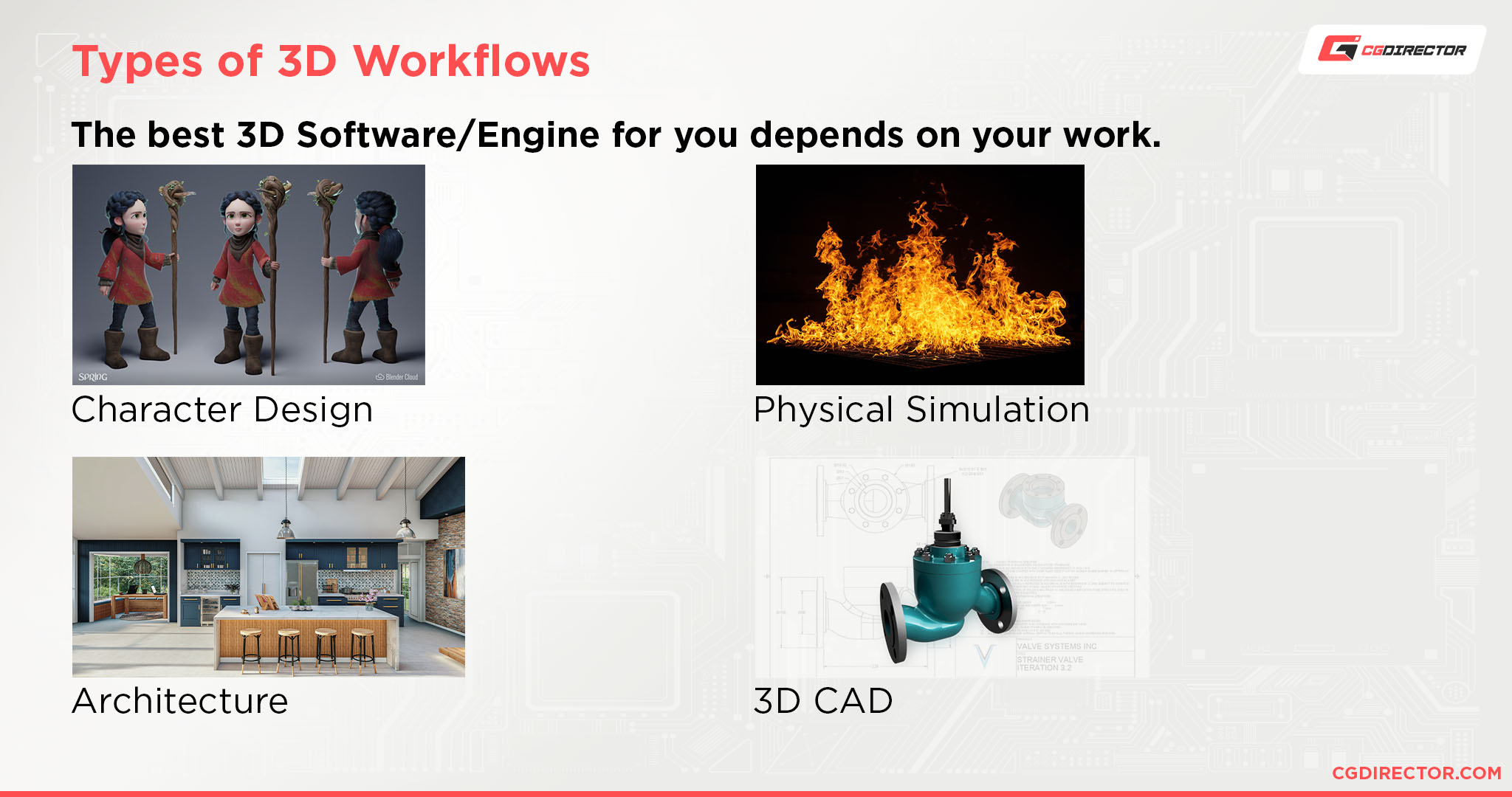
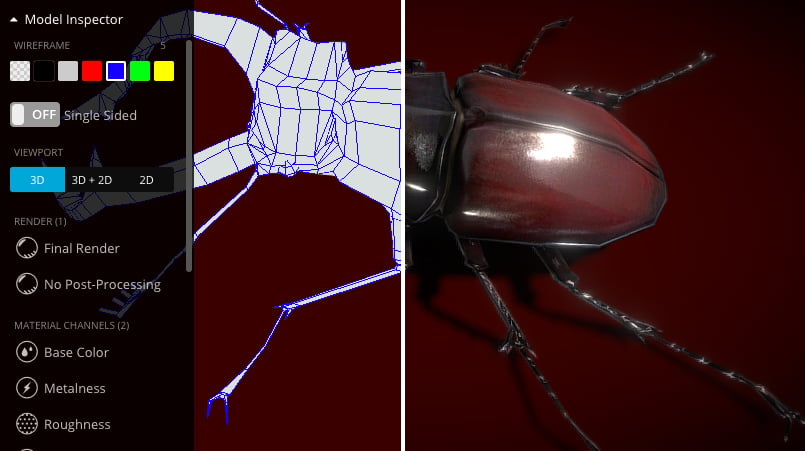
![What Is “Rendering” in Digital Art? [2D/3D] What Is “Rendering” in Digital Art? [2D/3D]](https://www.cgdirector.com/wp-content/uploads/media/2022/09/What-Is-Rendering-in-Digital-Art-Twitter-594x335.jpg)
![IOR / Index of Refraction List For Common Materials [For Use In 3D Materials / Rendering] IOR / Index of Refraction List For Common Materials [For Use In 3D Materials / Rendering]](https://www.cgdirector.com/wp-content/uploads/media/2022/06/IORIndex-of-Refraction-List-for-Common-Materials-Twitter-594x335.jpg)
![Best Laptops for 3D Modeling and Rendering [Updated Guide] Best Laptops for 3D Modeling and Rendering [Updated Guide]](https://www.cgdirector.com/wp-content/uploads/media/2021/07/Best-Laptop-for-3D-Modeling-and-Rendering-Twitter-594x335.jpg)
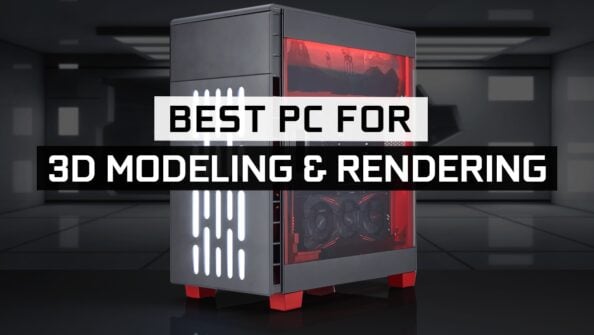

0 Comments